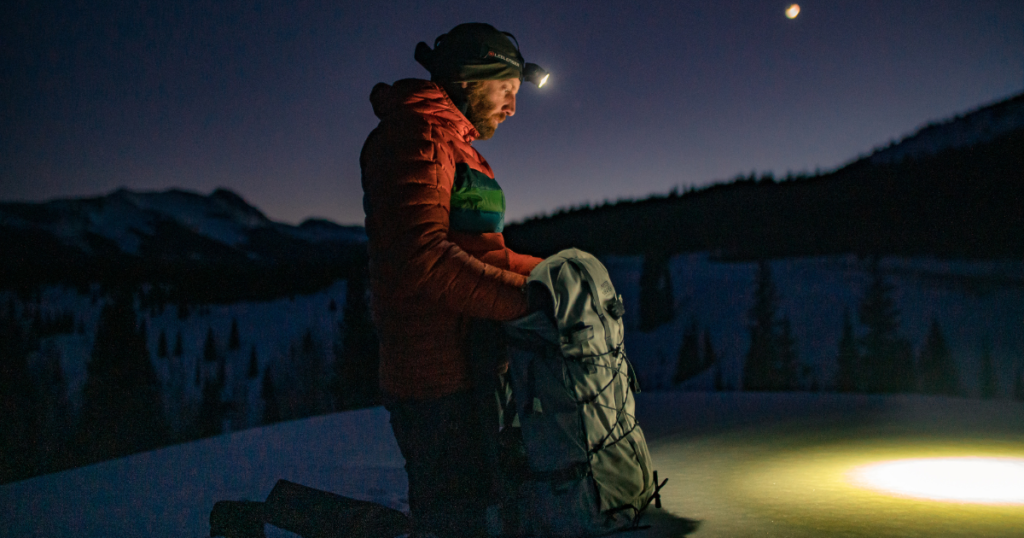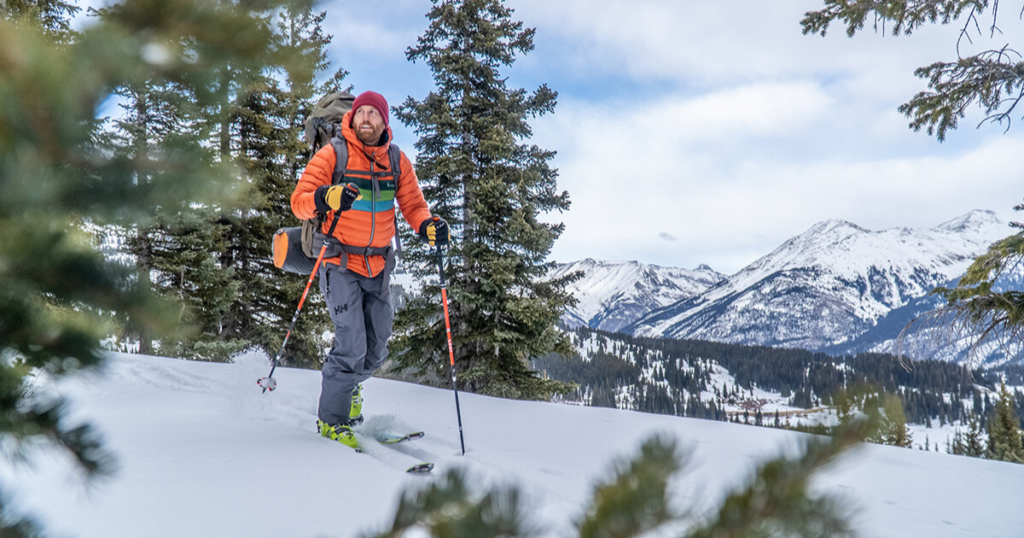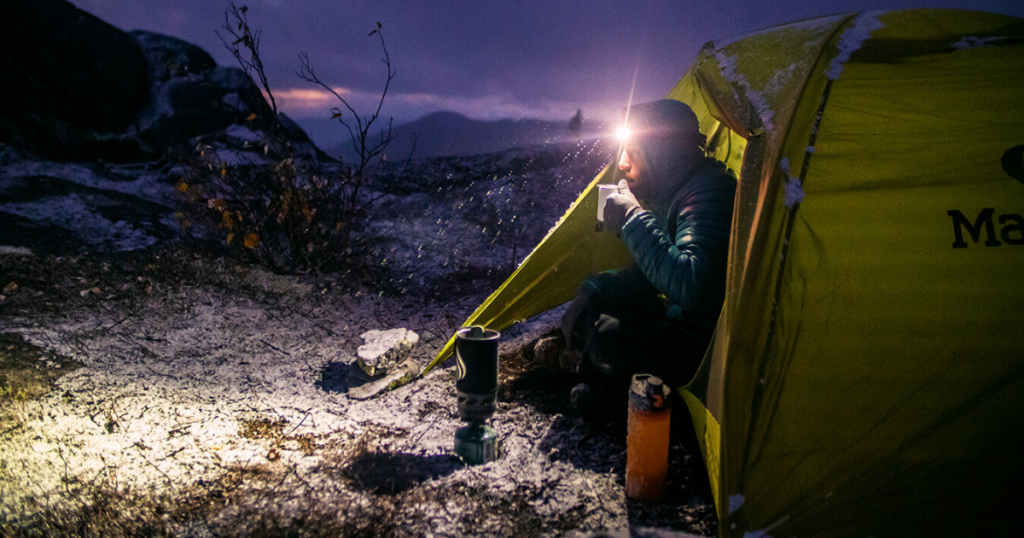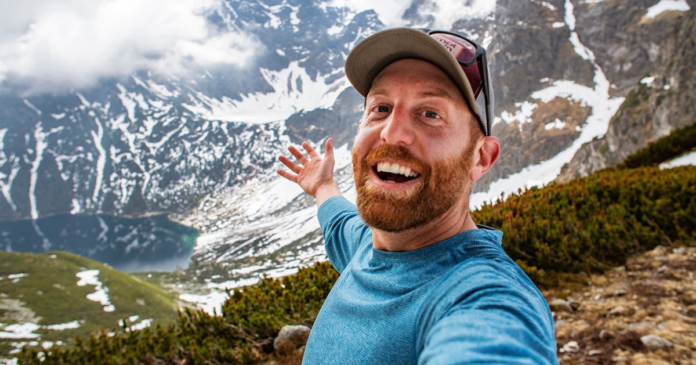Hello prospective adventurers! Today I want to share some of the backpacking-related wisdom I've garnered over the years. I've come up with three backpacking rules that will help ensure you have a good time. These rules will help keep you totally safe. These simple rules will ensure you leave the wilderness intact for other people. These tidbits are geared towards folks who are newer to the hiking community. Even if you feel like a veteran, we can all use a little refresher from time to time.
Backpacking Rule #1: Be prepared and plan your hike
If you were a Scout like me, or if you've watched the Lion King a few too many times, then you've had this mantra drilled into you. I know, it sounds obvious, but what does this actually mean? Being prepared entails having the right equipment for whatever could come about. Many environments that beckon us can be the types of places where the weather varies widely, and can change on a dime.
Plan for changes in the temperature
Make sure that you're sufficiently equipped for the daytime highs in the desert, but also the surprising nighttime lows. Likewise, pack not only for the windy mountain ridges, but also for the unexpected snow or rainstorm.
Being prepared for inclement weather means not only multiple layers that are up to the task (i.e. rain jacket, down jacket, thermal base layers, cozy mid-layers, additional sets of dry clothes, etc.), but also an adequate shelter and a solid sleep system (i.e. a sleeping bag with an appropriate temperature rating, an insulating sleeping pad, etc.).

Being prepared also means having appropriate footwear, that is broken in and ready to log miles over specific terrain. A “good” pair of hiking boots or shoes might mean different things for different trails. You'll want to make sure your shoes are comfortable, not just out of the box, but on mile-10 and beyond, and that they are calibrated to the conditions.
Things like ankle support, waterproofing, breathability, cushioning, durability, sizing etc., can be both inadequate or overdone, depending on the terrain. Too much, or too little of these things and you might find yourself tending to blisters, nursing black toenails, getting soaked/chilled, or sweating up a storm.
Navigation and route finding are critical skills
Being prepared also means knowing your route and how to navigate it. I always like to have a paper map and a compass on me. Sure, phone stuff helps a lot, but batteries die and you don't want to be left hanging in the middle of nowhere. Having the basic know-how to get yourself from point A to point B, without the unreliable crutch of technology is a backpacking must.
Tell someone where you are going backpacking
Finally, being prepared means telling someone where you're going and having a backup plan in case you don't show up at your destination. There may come a day when this simple formula will save your life, but more often it will just give you and your loved ones some peace of mind.
Rule #2: Pack light for your multi-day hike
I'm not advocating for some Kilian Jornet-style, ultralight fastpacking adventure, or even for counting every ounce, but just be aware of what you're bringing and if it is truly necessary. As a general rule, I recommend that beginners carry no more than 20% of their body weight. Obviously, there will be exceptions to this on the bookends of the bell-curve, but use this figure as a general reference-point. You'll be amazed how different a full-pack feels a few hours into a hike versus when you lifted it that morning in your bedroom.

Tips to lighten the backpack
Carrying too much water is often the main culprit. Water weighs in at 2.2 pounds/liter. If you've packed 4, 5, maybe even 6 liters, then that is a substantial load. I like to carry what I realistically think I will need. Scouting water sources in advance, and bringing an effective filtration or treatment system can save you a lot of needless struggle.
Packing too much food can be a problem
Packing too much food is another thing that's really easy to do. I like to bring 2 pounds per day. Anything more than that gets to be excessive. I can't tell you how many times I've finished a hike with 6 – 8 pounds of extra food still in my pack. Sure, some redundancies are good practice, but don't overdo it, and certainly don't go too deep into the luxuries. Bring yourself a little treat, but then leave it at that.
Get your backpack fitted properly
Another thing that can help reduce pack weight is getting your backpack properly fitted in the first place. It's often not as simple as just eye-balling it based on how tall or short you are. People have different leg to torso ratios that can change the requirements in unexpected ways. If you're lucky enough to live near a specialty outdoorsy retailer then they will likely have staff on-hand who can assist you. Alternatively, I have a video on my YouTube channel that helps make sense of this process.
Don't strap everything to the outside
My final tip to help lighten your load is don't be a junkshow! It's pretty impressive, but also disheartening to see what some people try to bring with them on a backpacking trip. I kid you not, last summer I saw someone carrying a full-size mattress over their head. If you find yourself attaching all kinds of things to the outside of your bag, or rigging up contraptions to increase your capacity, you might want to do another inventory and make some cuts. Outside of the obvious (like trekking poles, a sleeping pad, and maybe a tent), if you can't fit it in your pack, then there's a good chance you shouldn't be bringing it. So ditch the dangly bits!
Rule #3: Leave no trace
As outdoor enthusiasts, we are the shepherds of the land. It's our duty to not only look after the environment on which we tread, but also to set a good example for those around us. To leave no trace takes a few different forms. First, as already discussed, tell someone where you're going. This is important if you actually do get lost or injured, as it could save a ton of resources compared to if rescue teams had to search aimlessly for you.
Travel on durable surfaces
Secondly, travel on durable surfaces. This means sticking to the trails or rocky terrain, instead of virgin soil, through delicate plant-life, or any other vulnerable areas, whenever possible. Similarly, when you get to camp, aim to set up your tent on previously impacted sites.

Dispose of your waste properly
Furthermore, make sure to dispose of your waste properly. This means packing out everything that you brought in (including seemingly compostable stuff). This also means abiding by regulations when it comes to your special business. Often this means burying it in what's known as a cathole.
Space the cathole away from water
The general rule for a cathole is to pick a spot 200 feet (or more) away from water sources, dig a hole 6 – 8 inches deep, and bury the deed along with any toilet paper. Sometimes, you may even need to pack-out your waste. There are special bags you can purchase for this that help minimize the unpleasantness. It's not actually that bad and think of the cumulative difference this can make in high-traffic, delicate areas.
Don't take things you find
The fourth principle of leave no trace is to leave what you find. In the backcountry of Southwest Arizona, I often come across arrowheads and other artifacts that are rather alluring. Sometimes just a cool-looking rock will tempt me like Abu (Oh man, two Disney references in one blog, what's happening?). But I resist pocketing anything so that future explorers can enjoy these things too. One little rock may not seem like much, but again, some National Parks see millions of visitors each year, so this could have a huge cumulative impact on the environment. If I do it, then it gives everyone permission to do the same, and that's simply not sustainable.
Minimize your fire impact
The fifth element of leave no trace is to minimize your fire impact. There's nothing better or more primal than having a fire while camping. But, for starters, make sure that there isn't a fire ban in effect. If you have the go-ahead, aim to use existing fire-rings. It can be rude/disruptive to build your own, and it can even be dangerous.
Those of you who follow my adventures have probably heard me talk about the near-disaster experience of my youth that stemmed from making a new fire site. If you are in a completely wild setting, please take the time to learn how to clean up your pit afterwards, so that humans and animals alike won't ever know what transpired. Also, strive to use dead/detached firewood, rather than chopping down trees or hacking off branches/bark.
Respect wildlife
The sixth component of leave no trace is to respect the wildlife. Don't shoot at animals, don't throw rocks or shout at them (unless for protection), don't feed them, and don't take that selfie with the buffalo on the side of the road. Just…don't. Let the animals be wild so that both parties stay unaffected and can keep on keepin' on. Watch, listen, and admire from afar if you can; take a photo if you must.
Be considerate of others
The final part of leave no trace is to be considerate of others. This might mean not blasting music while at camp or on the trail, keeping your voices down while in peaceful areas, maybe leaving the drone at home, etc. Nothing wrecks a beautiful retreat into nature like obnoxious people. Don't be that person. Follow THE golden rule.
From one lover of the backcountry to another, those are my tips/requests. If you make some mistakes here and there, don't beat yourself up. But try your best to be respectful of the environment and mind your surroundings. That way we can all keep enjoying our awesome adventures, guilt-free.
If you enjoyed this article and want to learn more, check out all my gear reviews, tips, and adventures on BackpackingTV.
My favorite backpacking gear list
NOTE: These are affiliate links where I’ll earn a small commission if you make a purchase at no additional cost to you, but it’s a great way to show your support. Thanks!
Fleece Mid-layer | ALL-PACA Fleece Hoodie
Down Puffy Jacket (lightweight)





